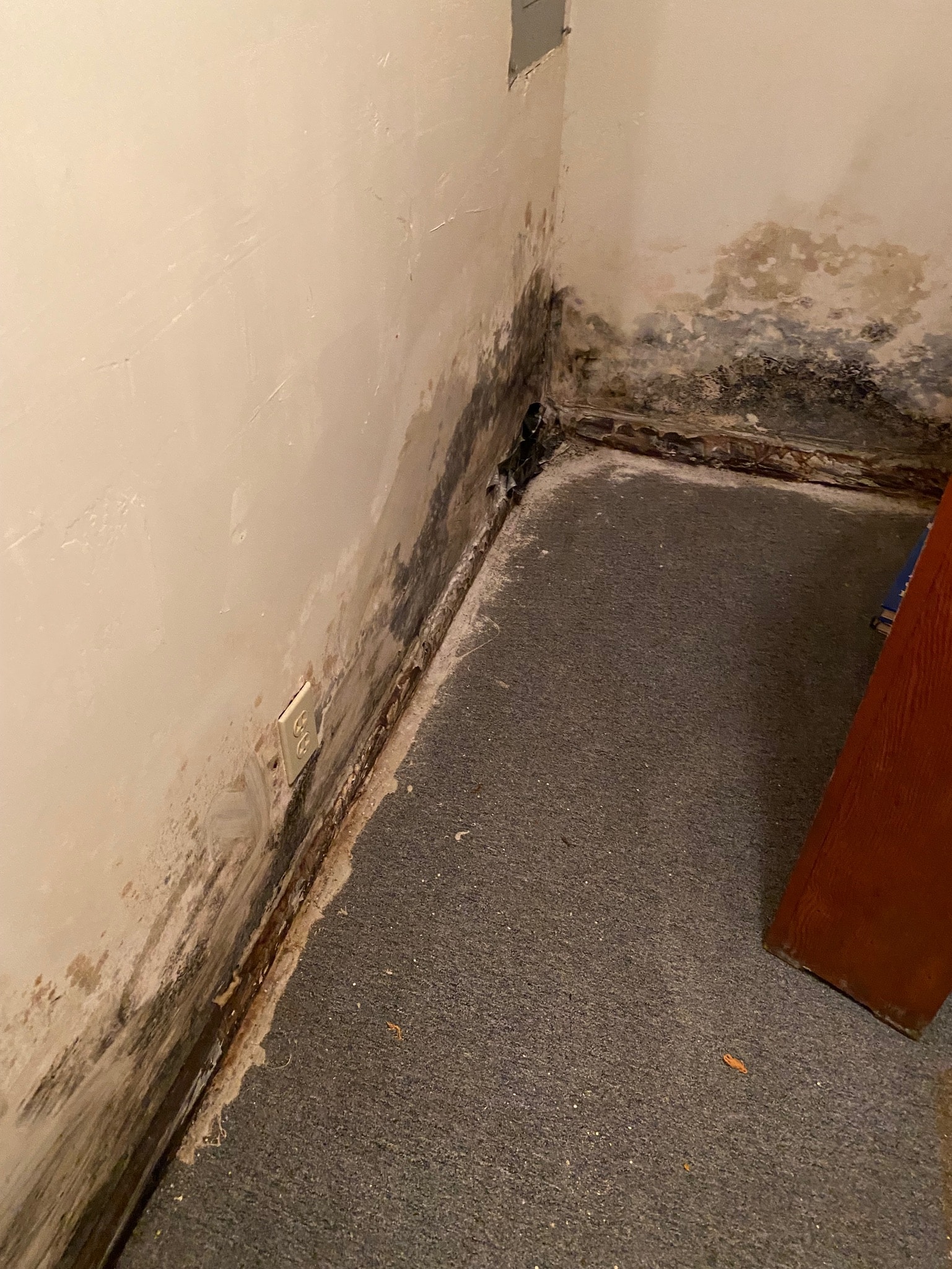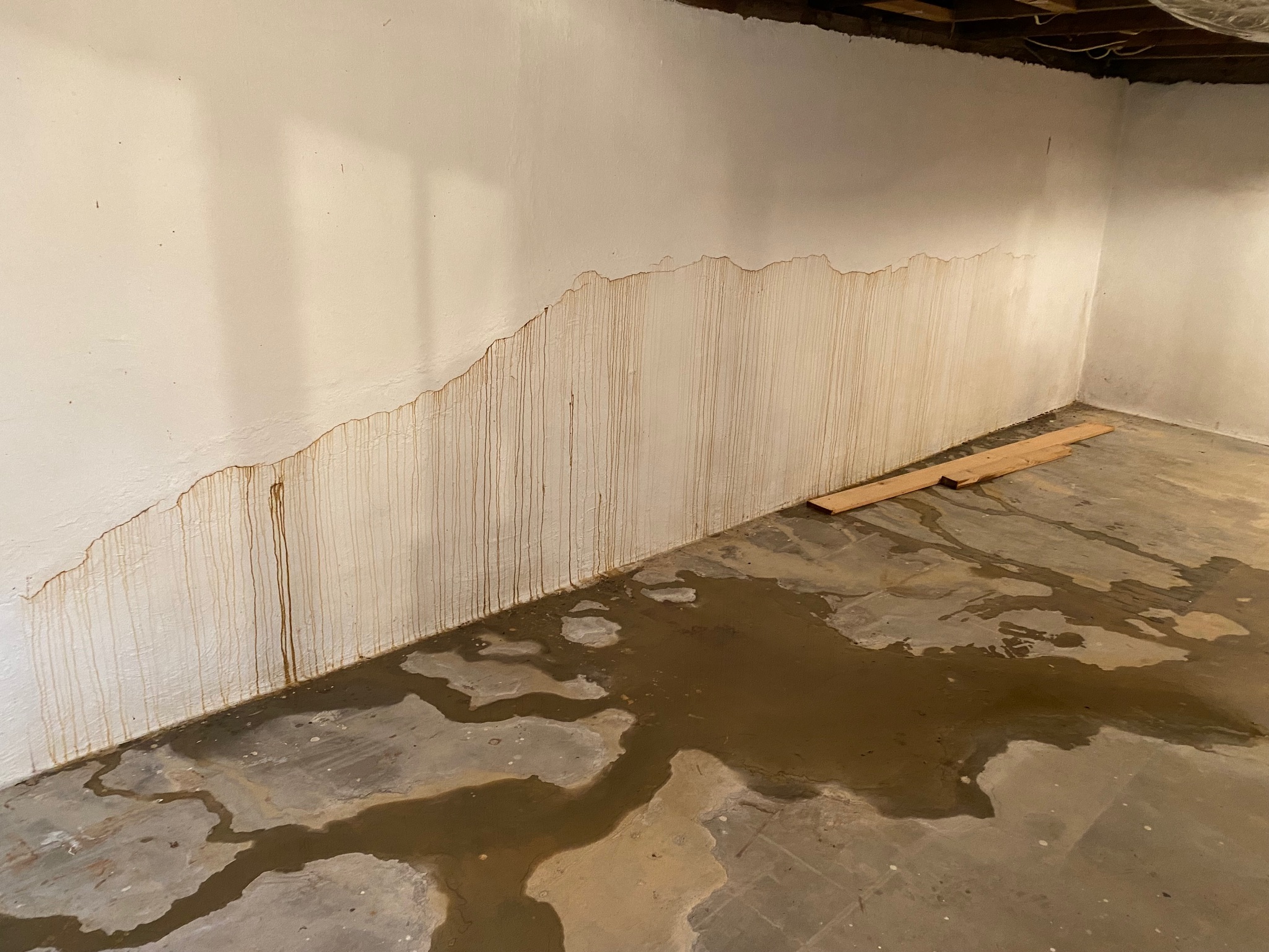You know your home is your sanctuary, but have you considered the importance of professional basement waterproofing? It’s more than just a protective measure – it’s about preserving the structural integrity of your home and ensuring a healthier living environment. And while the process might seem straightforward, it’s actually a complex task that involves a range of strategies. Curious about how it all works and how it could benefit your home? Stay tuned as we navigate this essential topic together.
Understanding Basement Waterproofing
In the domain of home maintenance, understanding basement waterproofing is a significant step for any homeowner. This process, designed to prevent water from entering your basement, is an essential measure in maintaining the integrity of your home’s foundation while protecting your possessions from water damage.
There are several methods you can use to waterproof your basement. External waterproofing, often the most effective, involves applying a waterproof coating or membrane to the outside of your basement walls. It’s a labor-intensive process that typically requires excavation, but it provides robust protection against moisture.
Internal waterproofing, on the other hand, is less invasive and focuses on managing water that’s already entered your basement. Methods include applying waterproof sealants to your basement walls and installing a sump pump to remove water.
Lastly, you’ve got drainage solutions, such as installing French drains around your home to redirect water away from your foundation. Each method has its pros and cons, and the best choice often depends on your home’s specific needs and circumstances.
It’s important you understand these methods to make an informed decision about your home’s basement waterproofing.
Signs Your Basement Needs Waterproofing
Recognizing the signs that your basement needs waterproofing is essential to prevent serious damage to your home.

If you’re noticing persistent moisture problems or visible cracks in your basement’s walls or floors, it’s time to address them.
These are key indicators that your basement may require waterproofing for its and your home’s preservation.
Identifying Moisture Problems
Moisture problems can be a homeowner’s worst nightmare, indicating a need for basement waterproofing. Your basement might be shouting for help, and it’s pivotal you listen. Ignoring the signs won’t make the problems go away, but recognizing them early can save you time and money.
Start by checking for damp or wet spots on walls or the floor. These might indicate a slow leak. You may notice peeling paint, chalky deposits on the walls called efflorescence, or a musty smell, which can indicate the presence of mildew or mold. If you’re seeing these signs, it’s likely your basement has a moisture problem.
Condensation on pipes, windows, or walls is another common sign. This typically occurs when moist, warm air comes into contact with a cold surface. You might also notice a high humidity level in the basement, which could lead to a variety of issues, including wood rot and mold growth.
Finally, if your basement floor feels damp or you’re noticing a persistent wet spot, you likely have a rising damp problem. This occurs when groundwater seeps up through the floor.
Identifying these signs early can help you tackle moisture problems head-on and protect your home.
Addressing Basement Cracks
Cracks in your basement walls or floor are more than just an eyesore; they’re a clear sign that your home needs waterproofing. These signs shouldn’t be overlooked, as they indicate bigger underlying issues. Cracks can allow water to infiltrate, leading to mold growth, structural instability, and a damp, unpleasant environment.
So what should you do? First, identify the type of crack. Hairline cracks are usually not as concerning, but if you see horizontal or vertical cracks wider than 1/8 inch, it’s time to call in a professional.
Waterproofing experts will seal these cracks using high-quality sealants, preventing further water intrusion. Depending on the severity, they might recommend a more thorough solution, such as installing a drainage system or applying a waterproofing membrane.
Don’t delay addressing these cracks. The longer they’re left untreated, the worse the damage can become. Remember, an ounce of prevention is worth a pound of cure.
The Risks of Ignoring Water Damage
Ignoring water damage in your basement isn’t just about aesthetics – it’s a gamble with serious consequences.
Unaddressed moisture can lead to hidden structural issues, compromising the very integrity of your home.
Additionally, it can foster harmful mold growth, posing silent but significant health hazards.
Unseen Structural Problems
When water damage gets overlooked in your home, it can lead to unseen structural problems that are both serious and costly. This damage doesn’t just impact the aesthetic appeal of your home—it strikes at the very foundation.
Over time, the integrity of your home’s structure can be compromised, leading to issues like wall cracks, buckling floors, and even a destabilized foundation. Ignoring these problems won’t make them go away. Instead, they’ll likely worsen and become more costly to repair.
Water can seep into the tiniest cracks, expanding and contracting with temperature changes. This freeze-thaw cycle can cause cracks to widen, further damaging your home’s structure.
In addition, water can lead to wood rot and metal corrosion, both of which can weaken your home’s structural elements. Waterlogged wood becomes soft and susceptible to decay, while corroded metal loses its strength and rigidity.
Health Hazards Unveiled
A myriad of health risks lurk in a home plagued by water damage. Unaddressed moisture can encourage the growth of mold and mildew, bringing with them a host of respiratory problems.
You’re not just risking a sneeze fest—prolonged exposure can lead to chronic conditions such as asthma and other respiratory infections.
Additionally, damp environments are a breeding ground for bacteria and viruses. The longer you ignore the water damage, the higher your chances of falling prey to various dangerous pathogens.
Pests such as rodents and insects are also attracted to moist areas. These uninvited guests can carry diseases, further compromising your household’s health.
Moreover, if your water damage involves sewage or contaminated water, you’re opening your doors to harmful microorganisms leading to a higher risk of severe illness.
Don’t underestimate the lurking dangers of water damage. It’s not just about preserving your home’s structure, but also protecting the health of you and your loved ones.
Choosing the Right Waterproofing Professionals
Often, the greatest challenge in basement waterproofing is selecting a competent and reliable professional for the job.
You’ll want to guarantee you’re choosing an expert who’s not only skilled but also possesses a deep understanding of the intricacies involved in waterproofing.
Start your search by checking for professional credentials.
Licensing, certifications, and membership in professional associations like the Basement Health Association are all good indicators of a professional’s qualifications.
Don’t neglect the importance of experience.
A seasoned professional will have tackled a variety of basement issues and will be better equipped to handle any surprises your project might present.
Look for contractors who’ve been in business for several years, and don’t be shy about asking for references.
Lastly, consider their customer service.
You’ll be working closely with this professional, so it’s essential they’re responsive and respectful.
Gauge this through your initial interactions, and also check online reviews for insight.
The Waterproofing Process Explained
Having selected an experienced waterproofing professional, you’re now ready to commence on the actual waterproofing process. It’s not a one-and-done affair. This process requires precision and a keen eye for detail.
Firstly, your pro will conduct a thorough assessment of your basement. They’ll inspect for cracks, leaks, damp spots, and any other signs of water damage. It’s crucial to identify the source of water intrusion to target the intervention effectively.
Once the problem areas are identified, the next step is often preparation. This could include cleaning the area of dust and debris, removing any existing damaged waterproofing, or patching cracks and holes. It’s important to create a clean, smooth surface for the waterproofing solution to adhere to.
After preparation comes the application phase. Your professional will apply the chosen waterproofing solution. This could be a sealant, membrane, or another product. They’ll make sure it’s applied evenly and thoroughly for maximum protection.
Different Techniques in Basement Waterproofing
Now, let’s get into the nitty-gritty of different techniques in basement waterproofing.
You’ll find there are two main types to evaluate: interior and exterior waterproofing methods. Each has its own set of advantages and disadvantages, which we’ll be examining closely.
Interior Waterproofing Methods
When it comes to interior basement waterproofing, there are three primary techniques you might consider: sealants, drainage, and waterproof coatings.
Sealants are typically the first line of defense. They’re applied to the walls and floors of your basement to prevent water from seeping in. Concrete sealers, for instance, penetrate deep into the pores of the concrete, providing a robust barrier against water.
However, they’re not a cure-all. They can’t fix existing water damage or larger structural issues.
Drainage systems, on the other hand, work by diverting water away from your basement. Interior drainage involves installing pipes or channels beneath the floor to collect water and divert it to a sump pump, which then expels it away from your home.
This method is often used when water problems are more severe.
Lastly, waterproof coatings are applied to the interior surfaces of your basement. These coatings create a watertight barrier, preventing water from penetrating the basement walls and floor.
They’re typically made of cement or acrylic and are very effective when properly applied.
Each method has its pros and cons, and the best one for you depends on the specific conditions and needs of your home.
Exterior Waterproofing Techniques
Just as there are three primary methods for interior waterproofing, there are several techniques that can be used for exterior basement waterproofing.
Each technique offers unique benefits, so it’s essential to understand your options before making a decision.
The first option is a waterproofing paint or sealant. Easy to apply, you can cover your basement’s outer walls, providing a barrier against moisture.
It’s a cost-effective solution, but keep in mind, it’s not the most robust option for heavy moisture areas.
Next, you’ve got the choice of a drainage system. This can be as simple as a French drain, capturing water before it reaches your basement and redirecting it away from your home.
More complex systems might involve sump pumps, expelling any collected water.
Lastly, you may consider exterior waterproof membranes. These are applied to your basement walls, forming a physical barrier against water.
However, this method can be more expensive and may require professional installation.
Cost Breakdown of Professional Services
Understanding the cost breakdown of professional services for basement waterproofing can help you budget effectively for this essential home improvement task.
The total cost typically comprises labor, materials, and equipment costs, each varying based on the project’s complexity and your home’s specific needs.
Labor cost, which constitutes a significant portion of the total expense, depends on the extent of waterproofing needed. It’s influenced by factors such as the size of your basement, the severity of existing water issues, and the waterproofing method chosen.
You’re paying for the expertise and experience of professionals who know how to tackle these issues efficiently and effectively.
Material costs include the waterproofing products used, such as sealants, drainage systems, and sump pumps. High-quality materials may cost more upfront, but they can offer better long-term protection, potentially saving you money in the future.
Lastly, equipment cost covers the tools needed for the job. This could include dehumidifiers, pumps, or excavation equipment for external waterproofing.
Ongoing Maintenance After Waterproofing
After investing in professional basement waterproofing, it’s important to maintain your home’s new defense system to guarantee its longevity.
Don’t assume that once you’ve waterproofed, you’re done. Regular inspections and upkeep are key to preventing future water damage.
Plan on inspecting the basement at least twice a year, particularly after heavy rainfall or snow. Look out for any signs of water leaks or dampness.
Pay close attention to the walls and floor for cracks, which could indicate a problem. If you spot any, it’s essential to address them immediately to prevent water from seeping in.
Maintaining your gutters and downspouts is another significant component. Make sure they’re clear of debris and properly channel water away from your house.
If you notice any pooling of water near your foundation, consider adjusting your landscaping to direct water flow away from your home.
Lastly, don’t forget to maintain your sump pump if you have one. Test it regularly to make certain it’s working correctly.
Your sump pump is your last line of defense against basement flooding, so keeping it in good working order is critical.
Real-life Success Stories
Homeowners across the country have transformed their basements from damp, uninviting spaces to dry, comfortable living areas thanks to effective basement waterproofing.
You might be wondering, “Does it really work?” Well, let’s look at a few real-life success stories. In Seattle, a family was battling persistent mold growth due to a leaky basement. After professional waterproofing, they’ve been mold-free for over three years now.

It’s not just about aesthetics either. Over in Boston, a homeowner was able to reduce her heating bill considerably after waterproofing, as the basement’s temperature stabilized, requiring less energy to heat the whole house.
Then, there’s the story of a couple from Ohio who’d their basement waterproofed before finishing it into a cozy home theater. They haven’t had any moisture issues since, and it’s a space they use every day.
In all these examples, basement waterproofing has proved essential in increasing property value, improving health conditions, and enhancing home enjoyment.
Future-proofing Your Basement
Plunge into the future with a waterproofed basement. Future-proofing isn’t just a buzzword, it’s a strategy that safeguards your home’s value and your peace of mind. It’s about being proactive, not reactive. So, how do you do it?
First, make certain you’re not just addressing existing water problems, but also anticipating potential ones. You’ll need to think about the layout of your property, climate changes, and the age of your home. These factors could affect your basement’s vulnerability to water damage.
Next, consider the quality of the waterproofing work. Don’t skimp on materials or professionals. Look for waterproofing experts with a proven track record, who use industry-standard products and offer warranties.
Remember, you’re investing in your home’s future.
With professional basement waterproofing, you’re not only shielding your home’s foundation but also safeguarding your possessions from water damage. Don’t risk turning a blind eye to potential issues – that’s as wise as bringing a knife to a gunfight. Invest in an expert service today and enjoy a mold-free, healthier living space tomorrow. Remember, prevention is less costly than cure. So, future-proof your home and keep the tide of potential water damage at bay.

Seal-tite Basement Waterproofing Co. is a full service basement environment contractor. We carry an A+ Better Business Bureau rating. We repaired over 40,000 homes and structures in Virginia, West Virginia, Tennessee, and North Carolina. We are fully insured and licensed. We have worked in all types of locations, including residential and commercial locations, government agencies, colleges, hospitals, churches, and condo associations.
Seal-tite® offers a lifetime transferable warranty. We carry a Class A Contractor’s License and we are fully insured. Our satisfied customers range from government agencies to businesses, hospitals, colleges, churches, and thousands of homeowners. Your home is probably the single largest investment you will make in your lifetime. Don’t wait, call Seal-tite® to help make your home dry, safe and livable.

